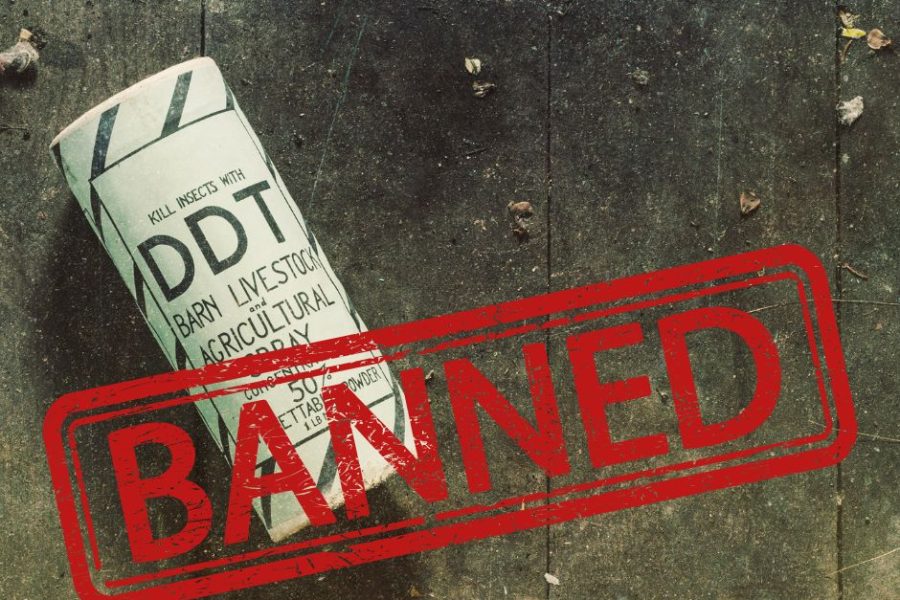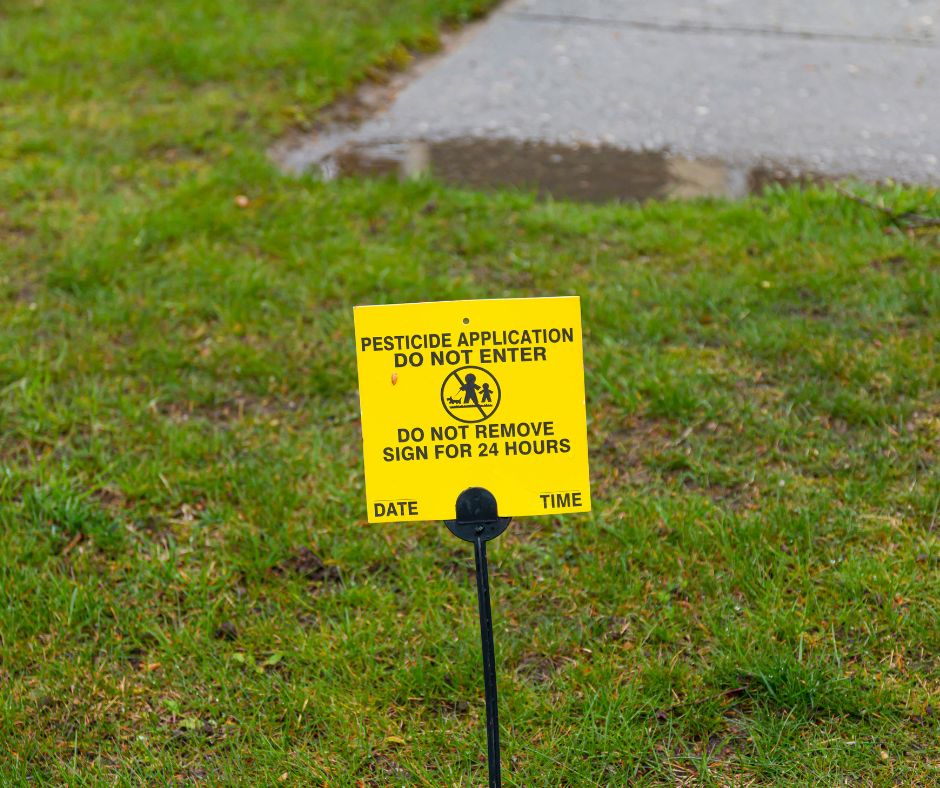
You may have heard of DDT at some point in your life. Perhaps you had a brief lesson in your high school history or science classes. Or you may be familiar with this dangerous chemical because of your own practice of sustainability. If you know anything about DDT, you know it was banned several years ago—and for a very good reason. In this article from James River Pest Solutions, you’ll discover the answer to a critical question—How and why was DDT banned?
This crucial point in history is something all people should be aware of. DDT made a massive impact on Earth and the health of life here. Continue reading to discover more about the history of DDT, and use what you learn to make healthy choices with your own pest control.
What is DDT?
DDT is the abbreviation for dichlorodiphenyltrichloroethane, an insecticide used previously in agriculture. It was one of the first chemicals used on such a grand scale. This manufactured substance is an organic halogen compound that causes significant harm to pesky insects. To combat the pests damaging and consuming farmers’ crops, many used toxic DDT.
As a result, agricultural professionals could eliminate the pests that cost them thousands of dollars in damages each year. It sounds like a beneficial product, right? Well, we’ve only scratched the surface of the power and impact of DDT. Soon, you’ll learn how and why this awful chemical was banned.

A Brief History of DDT
After DDT was created in 1874, it didn’t take long for the pesticide to become widely distributed and used for agriculture all over the United States. Pesticide is the term used for chemicals that kill unwanted pests, like rodents, weeds, and other harmful organisms. However, it wasn’t until 1939 that DDT was recognized as a highly effective insecticide. In other words, it was best at eliminating crop-destroying and disease-carrying insects.
After this fundamental discovery, the United States produced DDT in large quantities. The military heavily used it to manage vector-borne diseases during World War II. The chemical would be transported abroad to combat illnesses overtaking their soldiers, like malaria and typhus.
In the mid to late 1940s, people all over the nation began using DDT as their primary insecticide because of its low cost, versatility, and effectiveness. Before the DDT ban, nearly 1,400,000,000 pounds of the chemical had been used!
About a decade later, the use of DDT declined significantly. Its effectiveness was reduced due to insects becoming resistant to it and the invention of newer and better pesticides. However, the biggest reason people gradually decreased the use of DDT on their crops is because of the growing regulation on the chemical and the recently discovered adverse side effects.
How Was DDT Banned?
The eventual ban on DDT began around the late 1950s. Officials started seeing DDT’s toxic effects on the environment and local wildlife. However, scientific evidence wasn’t what truly brought the concern to the public eye. Instead, it was a novel written by Rachel Carson, Silent Spring. The book brought significant awareness of the dangers of pesticide use and the harmful lack of regulation to the public.
Finally, in 1972, the Environmental Protection Agency banned the use of DDT. It has been continuously studied since, and scientists have discovered new issues, directly and indirectly, resulting from using such a potent and disastrous insecticide.
Is DDT Banned in Other Countries?
By 2001, DDT was banned in agriculture worldwide. Unfortunately, the pesticide is still used in countries that need it. For example, some nations still use DDT to fight against vector-borne illnesses, including malaria from mosquitoes. It’s highly regulated to control its detrimental effects on the environment and life on Earth.
What Impact has DDT made on Our Planet?
Over time, we have discovered many DDT hazards. We continuously study it, finding even more alarming impacts that present themselves as the years go on. You can categorize the dangers of DDT into two groups—its effect on the environment and living creatures, including human beings.
The two categories are incredibly intertwined. For instance, traces of DDT may contaminate drinking water. Therefore, it is present in the bodies of the people drinking from that source.
Environmental Impacts of DDT
The concern about DDT’s impact on life begins with its presence in the environment. Once it has contaminated the soil, water, and atmosphere, it quickly spreads to people and animals that rely on these things. Here are just some of the findings scientists and officials have concluded:
- DDT travels high into the atmosphere. When the insecticide is sprayed on crops, a percentage of it disperses into the air and pollutes the atmosphere, depleting the ozone layer.
- It is insoluble in water, contaminating crucial drinking water and making its way into the bodies of marine life and humans.
- DDT is also highly persistent in soil. It takes many years to decay and remains in the ground for a long time, continuously impacting the wildlife consuming the plants, and coming in contact with the soil.
- Decades after discontinuing its use in the United States, scientists still discovered traces of DDT in the ground, air, and water due to its chemical properties.
- A USDA study identified DDT compounds in 60% of heavy cream products, nearly 30% of carrots, and over 40% of kale. Lower percentages were found in several other regularly consumed foods.

DDT’s Effect on People and Animals
Because life depends on the planet’s soil, water, and air, it can be harmed by DDT. Find out how people and animals are affected by DDT by reading through the facts below:
- DDT interferes with the nervous systems of people and animals.
- Once the chemical is in the environment, living things may unknowingly introduce it to their bodies by consuming plants, meat, and dairy products.
- It can also affect people and animals by touching or breathing in contaminated things.
- Fatty tissues in our bodies store DDT and an equally hazardous compound resulting from it breaking down, known as DDE.
- In pregnant women and wildlife, fetuses are exposed to DDT through breast milk.
- When a human is exposed to higher amounts of DDT, they may experience vomiting, shakiness, and seizures.
- Some lab studies have proven DDT can damage the liver and negatively affect reproduction.
- Although it has yet to be confirmed, DDT may cause cancer in humans.
- The compounds resulting from the breakdown of this harsh chemical were found in the blood of almost 100% of people tested in a CDC study.
- Bird eggshells become thin and vulnerable when contaminated by DDT.
DDT Banned: What Should People Learn from this Devastating Historical Event?
While we haven’t experienced another hazardous pesticide as detrimental as the widespread use of DDT, we must use the utmost caution when treating crops with chemicals in the future. As a collective race, we have learned the awful side effects a pesticide can have on the environment. Therefore, we must learn from our mistakes and prevent a similar situation from happening again.
It’s essential to know that other pesticides and insecticides are still dangerous. They are often highly regulated and thoroughly tested, but there is no better test than time. DDT seemed like a practical and beneficial chemical at first. It took several years to begin seeing the adverse effects. This is something we must remember as new pesticides are created and used.
Whether you are a farmer or an at-home gardener, the best thing you can do to avoid the negative impacts of pesticides is not to use them. There are many alternatives you can try before defaulting to spraying dangerous chemicals. And that’s precisely what we encourage at James River Pest Solutions.
Insects and other common pests can be detrimental to home gardens and yards. We know it is necessary to eliminate these destructive pests. However, we strive to use the most effective and safe ways.
James River Pest Solutions is the team you should call if you’re dealing with an infestation in your garden, yard, or indoors.